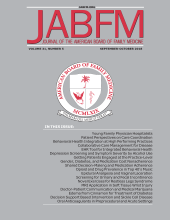Abstract
Purpose: Emergency Department (ED) overutilization and avoidable hospital admissions have been identified as areas of improvement. Studies have shown that ensuring adequate primary care follow-up after discharge from ED is an area that can be targeted to help decrease hospitalizations.
Methods: Between April 2017 and December 2018, any family medicine patient presented by the ED for admission who was determined to be a candidate for rapid primary care follow-up, was offered a “Golden Letter.” This letter guaranteed that the patient would be evaluated within 48 hours of discharge at the patient’s primary care clinic. We studied the impact on reducing hospital admissions, 30-day ED revisits, and 30-day hospitalizations. Our data analysis included gender, age, and insurance status.
Results: A total of 191 ED encounters that may have been admitted to the hospital were instead given a golden letter after shared decision making. A total of 104 (54.5%) completed a follow-up appointment within 48 hours. The 30-day ED revisit rate was 34% (65 encounters) with 33 (31.7%) of these patients having completed a follow-up visit and 32 (36.8%) did not follow up. There were 35 (18.3%) hospital admissions within 30 days of the ED visit. Of the patients admitted, 12 (11.5%) completed a follow-up visit and 23 (26.4%) did not complete a follow-up visit.
Conclusion: This initiative effectively reduced the number of low-acuity admissions and 30-day hospitalizations. This concept can provide a significant reduction of health care resource utilization and cost by ensuring safe ED discharge and rapid outpatient follow-up for low-acuity patients.







